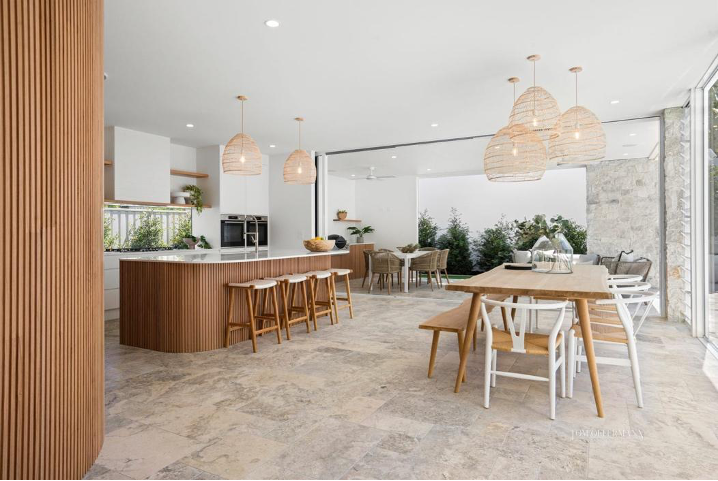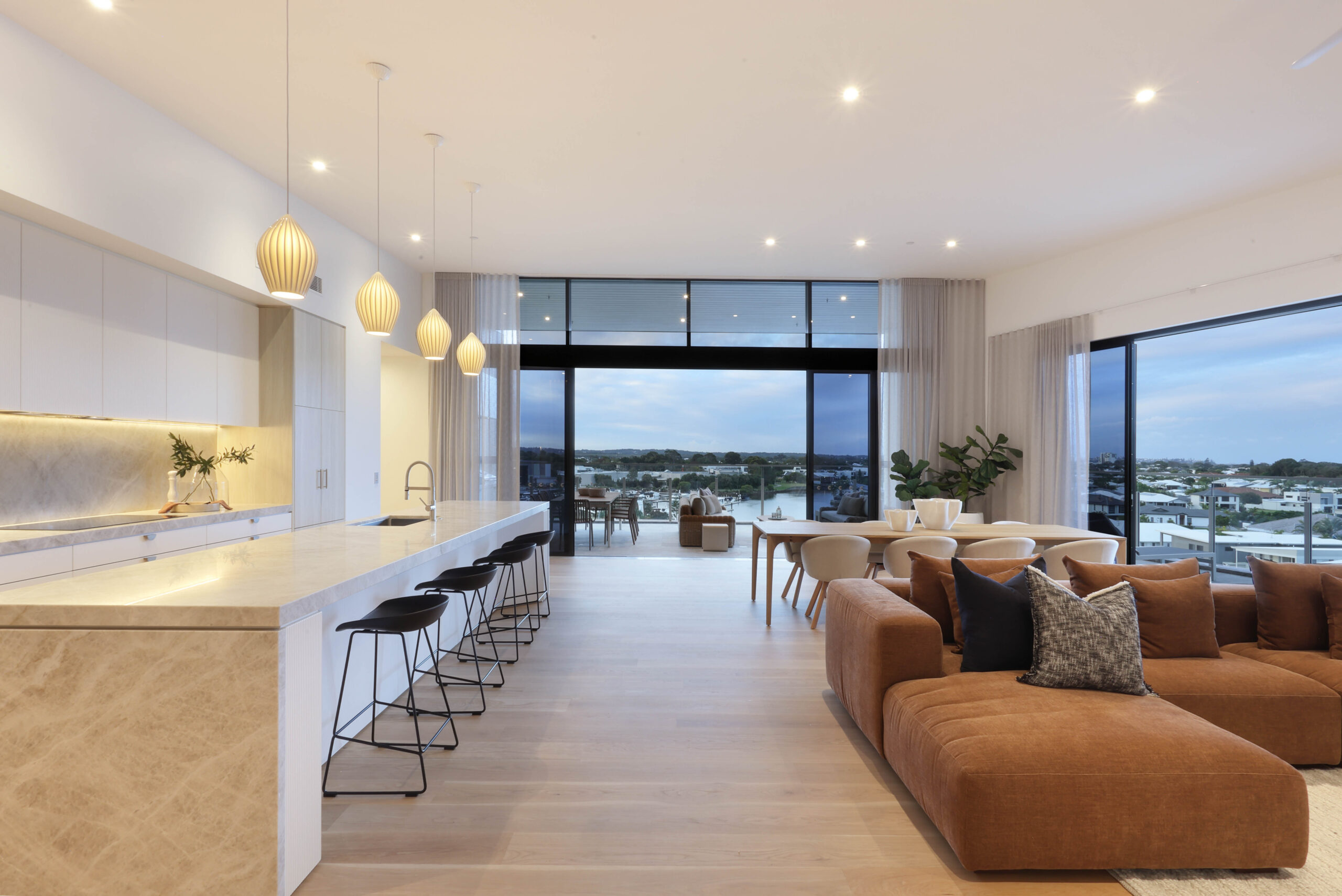Light up your life: Interior Design Lighting Ideas
Lighting within a home is a universal necessity, akin to natural light, yet it can sometimes be challenging to navigate. It’s not as straightforward as placing a bulb in a lamp solely for aesthetic purposes; there must be a thoughtful strategy behind lighting, especially considering the various types available.
Ambient Lighting
Ambient lighting is commonly referred to as general lighting, which includes fixtures like down-lights. These are strategically placed by designers on an electrical floor plan and typically remain unchanged by homeowners.
Accent Lighting
There is also accent lighting, employed to create focal points or serve as decorative elements. These can take the form of pendants, wall lights, spotlights, or strip lights beneath cabinets.
Task Lighting
Lastly, task lighting is utilised in areas where additional light is required for specific activities, supplementing ambient lighting when it’s insufficient.
Lighting serves a crucial role not only in providing illumination when natural light is absent but also in shaping the ambiance, mood, and atmosphere of a space. If you sense that your environment lacks a certain feel, it might be attributed to the arrangement of your lighting. Given that our eyes are naturally drawn to highlight the brightest areas in a room, it becomes imperative to ensure that your lighting setup accentuates the best features of your home, creating the desired look and feel.
Lighting needs also differ based on room size, with each requiring unique considerations. In a larger room, the potential for shadows and space between lights allows for more light sources, contrasting with the needs of a smaller space. Navigating lighting choices can be intricate, given that the intended use of a light may vary from one user to another. For instance, an individual might acquire a floor lamp for their living room as an accent piece, a decorative detail. Meanwhile, someone else may opt for a floor lamp in their living room as task lighting, aimed at illuminating the space for reading. This underscores the personalised nature of lighting, where there’s no one-size-fits-all style or approach. It is entirely customisable, offering a delightful opportunity for experimentation and creative exploration.
Kitchen Lighting
Commonly observed are recessed ceiling down-lights, pendant fixtures positioned above kitchen islands, and strip lighting beneath cabinets. Strip lights, a contemporary addition, not only serve to accentuate a splash-back but also emit a subtle glow, providing additional illumination for various tasks on the countertop. In kitchens, where clear vision and maximum lighting are crucial, it is advisable to incorporate cool light for recessed down-lights and warm lights for strip lights. Additionally, when considering the installation of pendants above a kitchen island, it’s essential to factor in the height. These lights should not impede headspace and should ergonomically complement activities at the island, especially when seated.
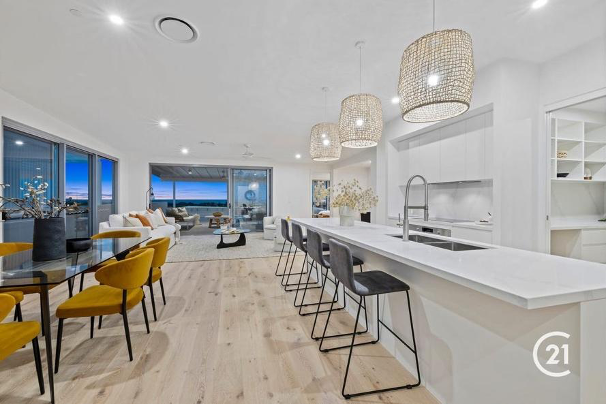
Bedroom Lighting
Typically, bedroom lighting includes ambient lighting through down-lights and task lighting provided by bedside table lamps, positioned specifically for reading. To enhance the bedside lamps and elevate them to accent lights, consider swapping them out for pendants or wall sconces, imparting a more luxurious ambiance. Unlike kitchens that benefit from cool light, a warm globe is preferable for bedroom lighting. If feasible, opting for a dimmable light adds to comfort and mood customisation. This allows you to tailor the lighting to complement your brain signals and activate your circadian rhythm, fostering a conducive environment for sleep.
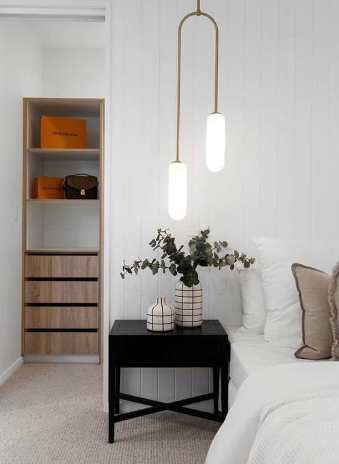
Living and Dining Areas
These areas should indeed be well-lit, but the illumination doesn’t necessarily have to come from bright white light sources. Common lighting fixtures in these spaces include down-lights, pendants, and floor lamps. Pendants positioned above dining spaces should be at a suitable height, ensuring they do not interfere with the functionality of the area. They should offer sufficient light for dining without being overly intense. Incorporating floor lamps in living rooms is also a wonderful idea, as they can be nestled into a corner, serving as a shade for an accent lamp and providing task lighting over the sofa for reading.
Bathroom Lighting
Bathrooms, often characterised by cool-toned tiles and minimal down-lights due to water restrictions and placements, benefit from the use of cool and bright white lights. These lights effectively illuminate the space without significantly affecting the mood. If you wish to introduce warm accent lighting, strip lighting beneath cabinetry can be a stylish addition, enhancing the ambiance of the room. Additionally, there is a growing popularity of LED-lit mirrors. This innovative approach to lighting, where the light is projected onto the body rather than shining down, proves advantageous for tasks such as applying makeup, using tweezers, or inserting contact lenses.
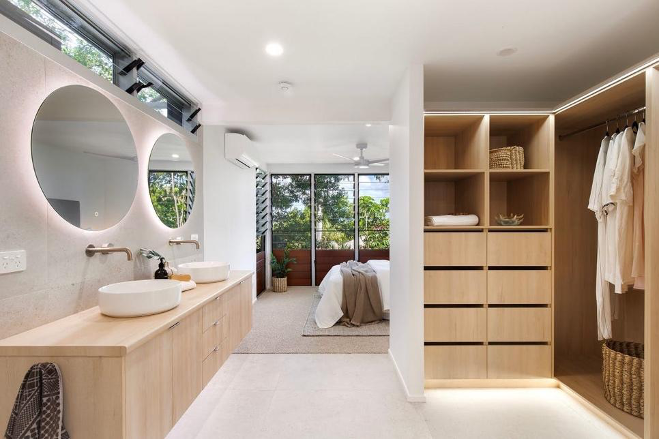
Feature Armchair
Bedrooms frequently have a vacant corner that, while too small for a dresser or mirrors, is still spacious enough to be utilised. A statement armchair serves as an excellent solution to fill such empty corners, creating an aesthetically pleasing addition when paired with a throw, and complemented by a small potted plant or basket nearby.
Bedroom Rugs
Rugs play a pivotal role in giving a bedroom its finishing touch and that’s why rugs are usually included in our bespoke furniture packages. Interestingly, even with carpeted floors were some think it is unnecessary to have. They have the ability to unify the entire room and provide a sense of cohesion. Rugs are usually positioned halfway underneath the bed and complement various types of bed bases. It’s essential to consider the rug’s material and how it interacts with the bed sitting on top, as this can influence your decision. As a general guideline, bedroom rugs often find a comfortable fit with most bed frames with dimensions around 160×230.
Lighting doesn’t need to be overly complex; simply experiment with the colour and brightness of the bulbs and the positioning of the lights. Consider the various types of lighting and their intended purposes; let this influence your decision and lead you to the right lighting choices. If you’re in search of new lighting brands to explore, we showcase a Hermon Hermon lighting display at our warehouse. Feel free to contact Hermon Hermon at 0466 787 277 to schedule an appointment, or visit SHOP at 3/100 Rene Street, Noosaville, for a tour of their collection housed in our warehouse.
